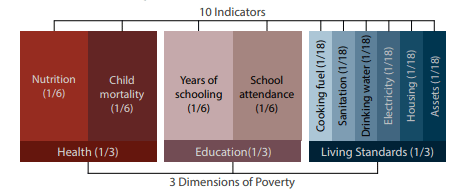El Nino
- A weak El Nino prevailing in the Pacific Ocean since the start of this year is beginning to dissipate as reported recently.
- It is a naturally occurring phenomenon that occurs every 2-7 years, and can last anywhere between nine months and two years.
- El Nino (The Little Boy) is a climate pattern with unusual warming of surface waters in equatorial Pacific Ocean.
- It is the “Warm phase”, off the coast of Peru.
- The opposite of El Nino is La Nina (The Little Girl), is when sea surface temperatures in the Pacific drop to lower-than-normal levels.
- It is the “Cool phase”.
- These warm and cool phases are part of a recurring climate pattern that occurs across this section of the Pacific, known as the El Nino-Southern Oscillation (ENSO).
- The air circulation as a result of difference in surface pressure and temperature over the western and eastern tropical Pacific Ocean is known as Walker circulation.
- The two conditions influence weather events worldwide, including the Indian monsoon.
- It affects precipitation in few areas, drought can be widespread affecting southern Africa, India, Southeast Asia, Australia.
- El Nino is known to suppress rainfall during the monsoon months in India.
- During an El Niño, the trade winds weaken in the central and western Pacific.
- The clouds and rainstorms associated with warm ocean waters also shift toward the east.
- So, the beginning of dissipation of El Nino is a good news for India which is hoping to get good rainfall in the remaining part of the monsoon season.
- Other effects around the world include,
- Flooding in South America
- Drought in Indonesia and Australia
- Warmer, drier winters in the eastern and midwestern US
- Wetter winters in California and the Southwest
- Declining fisheries
- More hurricanes in the Pacific, fewer in the Atlantic
- Higher global temperatures
Multidimensional Poverty Index (MPI)
- Global MPI report for 2019, released by UN Development Programme (UNDP) and the Oxford Poverty and Human Development Initiative (OPHI).
- It is an international measure of acute multidimensional poverty covering over 100 developing countries.
- It defines poor not only on the basis of income, but on other indicators, including poor health, poor quality of work and the threat of violence.
- The global MPI factors are measured using 10 indicators,

- The MPI assesses poverty at the individual level.
- If someone is deprived in a third or more of ten indicators, the global index identifies them as ‘MPI poor’.
- About 1.3 billion people are 'multi-dimensionally poor' across the globe, according to the report.
- India has reduced MPI from 0.283 to 0.123 in a decade lifting 271 million people out of poverty in 10 years.
- The number of people living in multidimensional poverty has gone down from 690.55 million in 2005-06 to 369.55 million in 2015-16.
- It was found that Jharkhand has made the fastest improvement among Indian states in reducing poverty .
- Jharkhand reduced the incidence of multidimensional poverty from 74.9 % to 46.5 % between 2005-06 and 2015-16.
- Bihar, Jharkhand, Uttar Pradesh, and Madhya Pradesh together accounted for 196 million MPI poor people more than half of all multidimensionally poor in India.
- The report also showed that children suffer poverty more intensely than adults and are deprived in all 10 indicators.
Kartarpur Corridor
- It is a road link for Sikh pilgrims to visit the famous Kartarpur Sahib Gurdwara in Pakistan.
- It would link two important holy sites related to the founder of Sikhism located in Pakistan and in India.

- The 16th century Gurdwara Darbar Sahib Kartarpur is on the banks of the river Ravi.
- The gurudwara was established by the first Sikh Guru in 1522.
- It was here that Guru Nanak assembled a Sikh community and lived for 18 years until his death in 1539.
- Recently it had been agreed between two countries for a visa-free Kartarpur corridor to operate daily with a limit of 5,000 pilgrims per day.
- This would also be open to pilgrims of Indian origin who are citizens of other countries.
- A four-lane Highway will connect Dera Baba Nanak from Gurdaspur-Amritsar Highway to International border.
- The length of the corridor is about 4 km, 2 km on either side of the International Border.
- It comes at the time of 550th birth anniversary year of Guru Nanak.
Jalyukta Shivar
- It is the flagship programme of the Maharashtra government.
- It aims to make 5,000 villages free of water scarcity.
- It target the drought-prone areas by improving water conservation measures to make them more water sustainable.
- It also proposed to strengthen and rejuvenate water storage capacity.
- Dedicated committees were formed to assist in construction of watersheds like farm ponds, cement nullah bunds alongside rejuvenating the existing water bodies in the villages.
- More than 11,000 villages where Jalyukta Shivar was introduced are declared drought-free.
- The water storage capacity has been improved and the overall agriculture productivity jumped up 30 to 50 % in these areas.
Source: Indian Express, PIB

